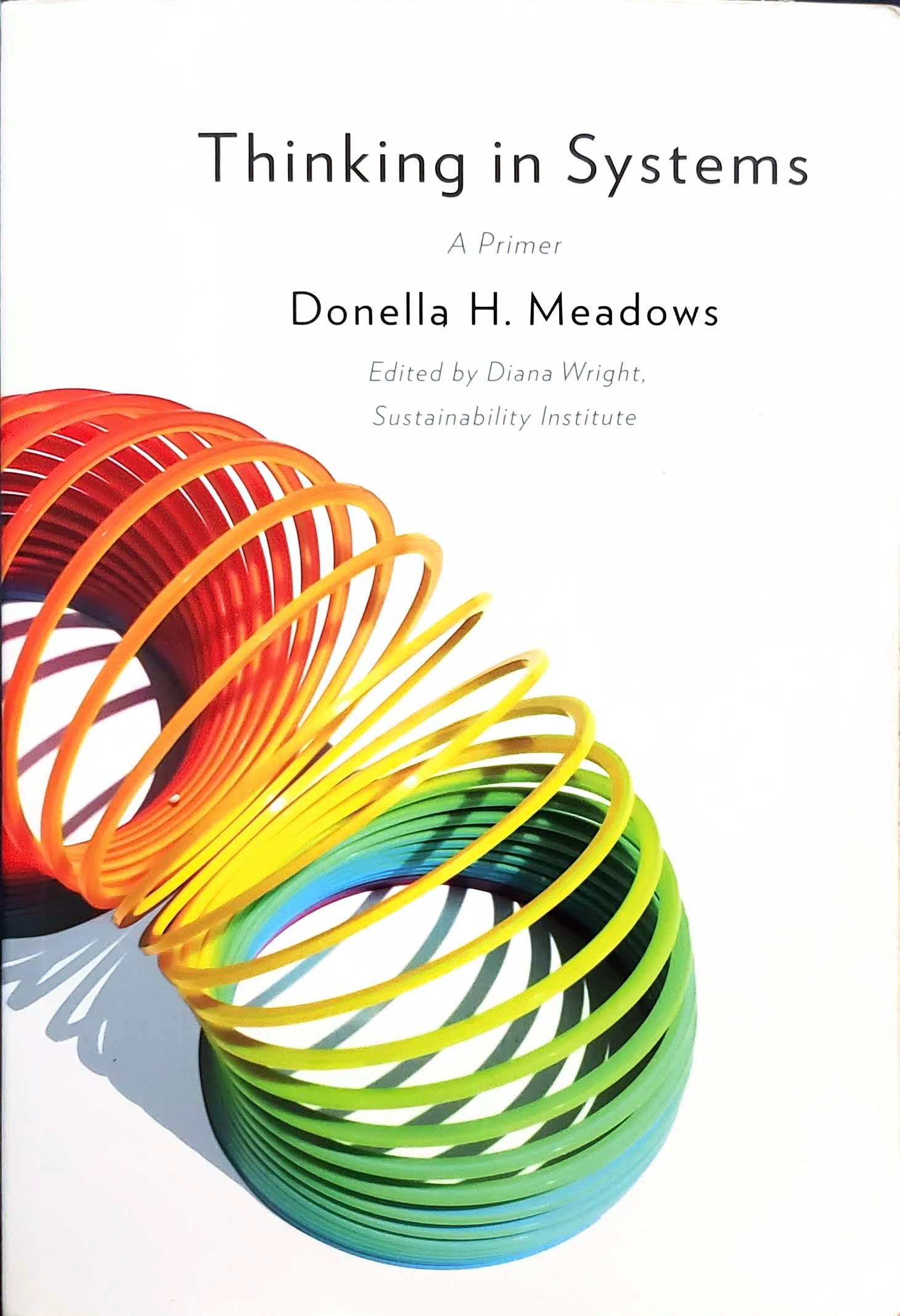
Thinking in Systems
A Primer
A very worthwhile read considering how brief it is. I suspect children of the internet age won't find any ideas in here all that revolutionary, other than maybe having a finer point put on them than the reader has heard before. I think our generation and beyond lives so visibly interconnected between layered systems that it is impossible to not pick up some sense of how systems work.
The book is divided into 3 main parts: first, a walkthrough of the systems way of thinking; second, an exploration about why it systems are often surprising to us as humans; finally, a section discussing how we should live with systems. It's impossible to separate this book from the death of its author: Donella Meadows died in 1998 while working through the pieces that would become this book, and I'm sorry to say it is apparent in the final work. Her colleagues have done a noble job of creating something close to whole from what she left behind, but I'd be lying if I said the gaps weren't visible. It's truly a shame that she wasn't given more time.
The first section was especially fruitful to me, but I feel that I will value the second and third sections upon revisiting in the future. My complaint with them was that it felt that the first section had assembled this somewhat unifying theory of systems thinking, and then the second two sections seemed preoccupied with human systems. But I won't complain too much, this book as a whole and those latter sections in particular were some of the most inspiring and radical anarchist and humanist writing I've read in a while, and no one could convince me to the contrary.
Big ideas
- p85 - natural-hierarchies-are-bottom-up
- All systems that touch the physical world have a limiting factor. Almost no reinforcing loops exist in nature indefinitely, and are always overwhelmed by a balancing feedback loop.
- Most systems exist in a state of dynamic equilibrium, where their balancing and reinforcing feedback loops are in balance.
- Delays within a feedback loop are often the source of oscillations in the system.
- p194 (or all of Pt 3) - When seeking to change a system, there are a number of points at which to intervene. Here is the author's list in order of increasing effectiveness:
- Numbers
- Buffers
- Stock-and-Flow Structures
- Delays
- Balancing Feedback Loops
- Reinforcing Feedback Loops
- Information Flows
- Rules
- Self-Organization
- Goals
- Paradigms
- Trancending Paradigms
Citation
Donella H. Meadows. Thinking in Systems: A Primer. 2008. Printed Book.